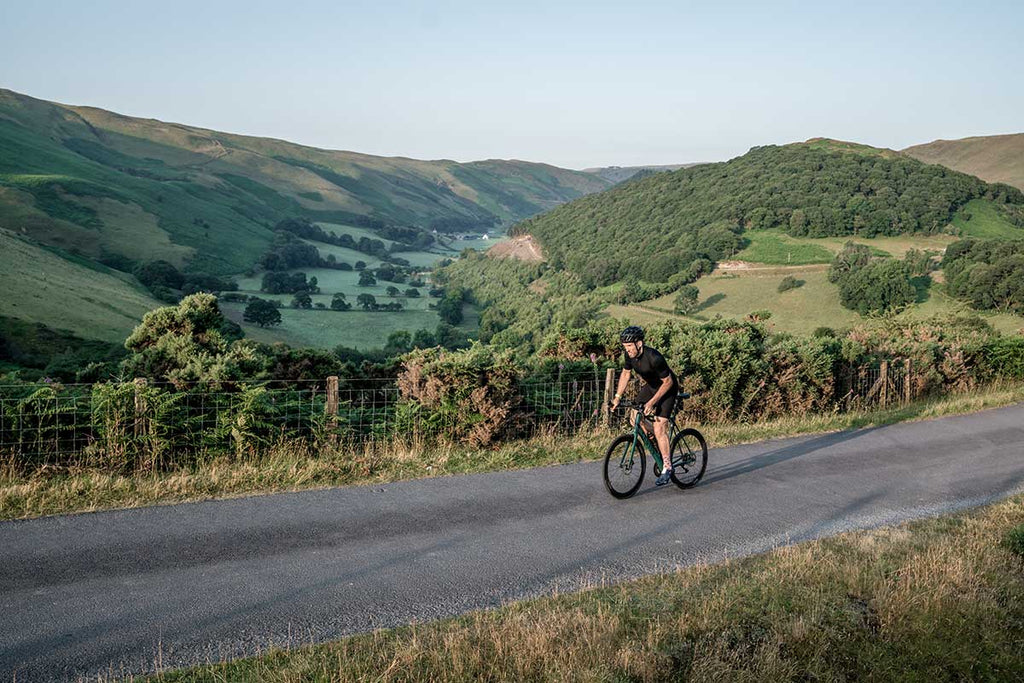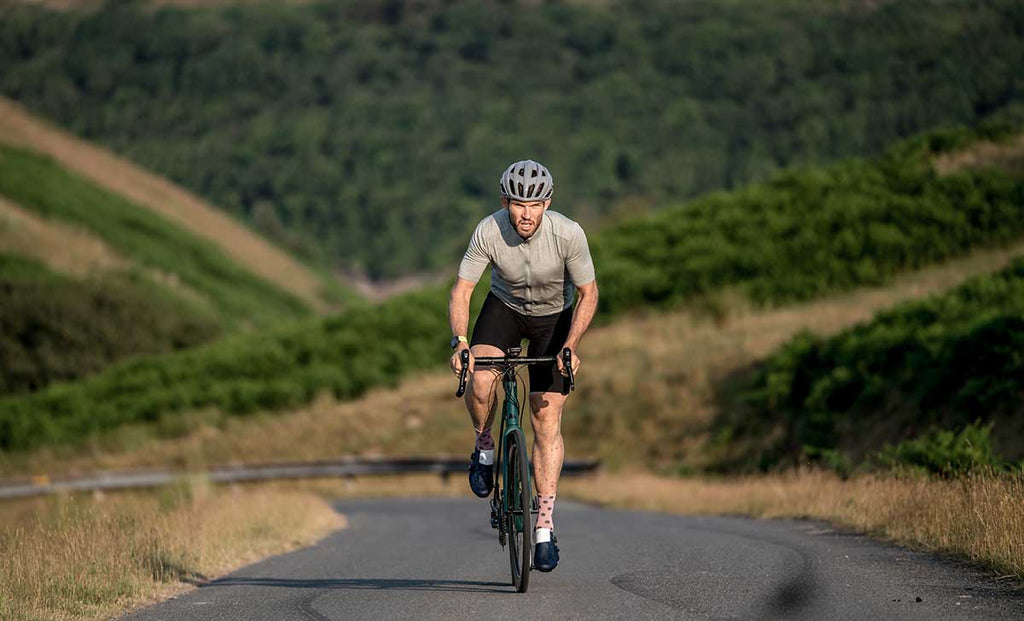For those that follow the world of professional cycling, you’ll know that training camps, especially those of the altitude variety, are an integral component of any self-respecting rider’s preparation for a major race. So much so that it will not be unusual for them to attend a number of these in any given season. It’ll also come as no surprise that, much like every other facet of professional cycling – from bikes, components and kit through to nutrition, power meters and recovery aides – the desire for training camps has slowly trickled its way into cycling’s mainstream.
Which explains why, four weeks out from my race in France (Haute Route Ventoux, which you’ll read about in my next instalment), I was to be found sat at Heathrow airport – something of a novelty having not left the UK for two years because of you know what – excitedly awaiting my flight to Milan, from where I would be taken to the mountain town of Bormio in northern Italy for a five-day high-altitude training camp. Granted, this is something of a luxury for an amateur rider like myself but, seeing as every other aspect of my preparation for Haute Route Ventoux has been in keeping with the life of a professional cyclist, I reasoned that it would be best to stick with the ‘in for a penny, in for a pound approach’. Admittedly, it was a simpler decision to make knowing that my wife was happy to man the fort at home and look after our little ones on her own for the week, an easily forgotten component of this entire process and a reminder that whilst I am the cyclist on the bike, it’s been a family (team) effort that has allowed me to adopt a borderline selfish approach to this project.
Granted, this is something of a luxury for an amateur rider like myself but, seeing as every other aspect of my preparation for Haute Route Ventoux has been in keeping with the life of a professional cyclist, I reasoned that it would be best to stick with the ‘in for a penny, in for a pound approach’. Admittedly, it was a simpler decision to make knowing that my wife was happy to man the fort at home and look after our little ones on her own for the week, an easily forgotten component of this entire process and a reminder that whilst I am the cyclist on the bike, it’s been a family (team) effort that has allowed me to adopt a borderline selfish approach to this project.
Despite this method, and with my family’s continued support, I have only been able to push the envelope so far, given that for all the professionalism, I have still had other areas of my life needing a level of focus and attention. Hence, the appeal of a training camp, where all of life’s other stresses were taken out of the equation, leaving me with the sole focus of riding my bike and seeking the extra gains that can be acquired through such a dedicated window of training.
Over reaching is the target
“I think the first thing to point out is part of the purpose of a training camp is an overreach,” explains pro mountain biker Hannah Finchamp. “Typically, when we train, we should be training in a way that allows us to recover between sessions. This is how we create a sustainable training load and avoid over-training.
“Over-reaching, on the other hand, is when we temporarily increase training load beyond what we can recover from one day to the next. This creates an increase in training stimulus and an increase in fitness in a short period of time. This is important when training for a big event because it allows us to maximise our fitness. It’s also important that we allow ample time to recover from this huge training stimulus before we line up to race.”
So, why Bormio? Two reasons. The first is altitude. It sits at 1225m, allowing me to train high and sleep low, which is widely regarded as being the best approach to an altitude camp. The second reason is its proximity to some of cycling’s most iconic climbs. Both the Passo dello Stelvio and Passo Gavia start from Bormio itself, reaching altitudes of 2757m and 2621m, respectively, as well as the Passo Mortirolo and lesser-known Laghi di Cancano, which both start within a short distance from this conveniently situated Alpine town.
Stelvio and Gavia loom large
 Whilst all four climbs would feature during the course of the week, it was the Stelvio and Gavia that I focused most of my attention on, not least because they best simulate the sort of climbing I would be doing in France, which is to say longer and more constant gradients. Whilst iconic, the Mortirolo is brutally steep and thus not ideal for the sort of controlled efforts I’d be looking to put in, but a great challenge nonetheless and a confidence booster having overcome such a brute of a climb.
Whilst all four climbs would feature during the course of the week, it was the Stelvio and Gavia that I focused most of my attention on, not least because they best simulate the sort of climbing I would be doing in France, which is to say longer and more constant gradients. Whilst iconic, the Mortirolo is brutally steep and thus not ideal for the sort of controlled efforts I’d be looking to put in, but a great challenge nonetheless and a confidence booster having overcome such a brute of a climb.
But really the crux of the trip was three big days that included two ascents of the Gavia and four of the Stelvio, which ensured that by the time I left to fly home, I had overloaded my body with the desired level of training stimulus, which with the right recovery should lead to the gains I had hoped for. Not only that but the time spent on those climbs had given me a timely psychological boost as well.
Throughout the training programme, with its multitude of different intervals of varying lengths and intensities, there has always been a little thought in the back of my head wondering how such efforts would translate to performance in the real world; that is to say on the slopes of a hors categorie climb, the likes of which we simply don’t have in the UK.
Never felt better

Week nine
| Monday | 105 mins riding, including 3 x 20 min SST (Sweetspot training, 88-94% FTP) TSS 140.00 |
| Tuesday | Rest Day |
| Wednesday | 90 mins @ zone 2/3, including 3 x 8 mins @ zone 2 TSS 95.0 |
| Thursday | 105 mins riding, including 3 x 20 min SST (Sweetspot training, 88-94% FTP) TSS 140.00 |
|
Friday |
90 mins @ zone 2/3, including 3 x 5 mins @ zone 2 TSS 80.0
|
| Saturday | 105 mins riding, including 3 x 20 min SST (Sweetspot training, 88-94% FTP) TSS 140.00 |
| Sunday | Rest day |
Week ten
| Monday | Rest Day |
| Tuesday | 50 mins, including 5 mins @ zone 3 and 3 x 5 min SST (Sweetspot training, 88-94% FTP) TSS 75 |
| Wednesday | 50 mins, including 5 mins @ zone 3 and 3 x 5 min SST (Sweetspot training, 88-94% FTP) TSS 75 |
| Thursday | 60 mins @ zone 3 – TSS 90 |
|
Friday |
Rest day |
| Saturday | 60 mins, including 10 sets of [10 seconds on/ 10 seconds off x 6] TSS 40.0 |
| Sunday | 3 hours @ zone 2 – TSS 150 |
For weeks 1-2 read Part One.
For weeks 3-4 read Part Two.
For weeks 5-6 read Part Three.
For weeks 7-8 read Part Four.
Until you actually take on something like the Stelvio, which from Bormio is just shy of 22km with 1500m of vertical ascent, it’s hard to know if you’re ready for such a challenge or not. Granted, you’ve done all the training and you trust in the process, but until you put it all into practice an element of doubt remains. That doubt was well and truly removed by the end of the week with the final ascent of the Gavia being perhaps the best I can ever remember feeling on a bike going uphill. I was by no means setting any records on my way to the summit, but there was a feeling of control and strength, of knowing my body and riding fast (by my standards). It was also reassuring to know that, if needs be, I could have gone up a gear.
The trip also allowed me the opportunity to test out my newly refined fuelling strategy using the real-time data from Supersapiens, eating according to my blood-glucose levels rather than simply eating as and when I felt I needed to, which is how I had approached things in the past. It certainly added an extra element to my performance on the long climbs, knowing I had the fuel to keep pushing hard and simultaneously topping those levels up to avoid any unwanted dips in energy at a vital point of the climb.
What remains to be seen now is if I can replicate this sort of form and fuelling strategy when the pressure of being in a race is on, as make no bones about it, I am going to France to race, to leave nothing on the table in a quest to finish as high up the rankings as possible. That is, after all, what all this training and sacrifice has been for, to discover a new limit to my athletic ability, to see just how good I can be in the heat of battle. Only time will tell now.































